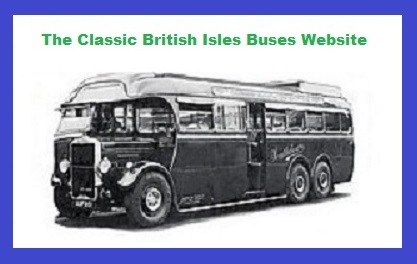

The Classic British Isles Buses Website
Transport in Peru, page 2 - railways in the high Andes in 2011 (by Dick Gilbert)
Last updated 28 August 2024
Email Events diary Past events list Classified adverts Classic U.K. Buses Classic Irish Buses Classic Manx Buses
| Buses in 2011 | Railways in 2011 | Aircraft in 2011 | Other transport in 2011 |
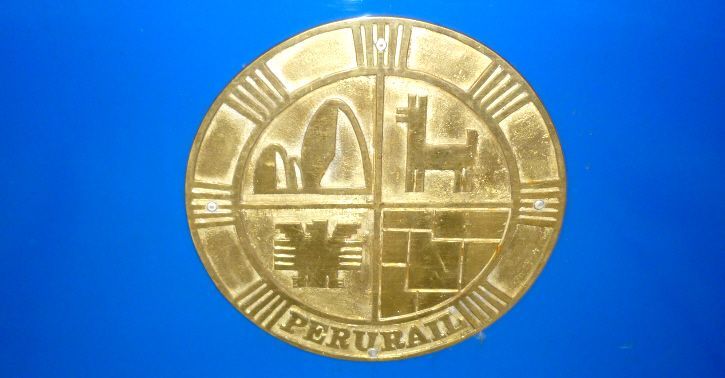
Every Perurail carriage bears one of these splendid plaques. It shows an impression of Machu Picchu, a llama, an Andean condor bird,and some typical Inca stonework.
Peru is a vast country with a wide spectrum of transport interest. I have tried to capture a varied selection of items that we passed on our travels. This page looks at the trains we travelled on, or came across, while travelling from from the high altitude city of Cuzco to the famous Inca site at Machu Picchu, and back; and then we were booked on a luxury train (the Andean Explorer) south from Cuzco to Puno, on the shore of Lake Titicaca.
In fact the railway no longer runs from Cuzco - or the nearby station of Poroy - to Machu Picchu (for reasons which vary, depending on who you ask), and tourists now pick it up half way along the route at Ollantaytambo, where it enters the steep gorge of the Urubamba River and descends steadily towards Machu Picchu. Furthermore the train does not terminate at Machu Picchu, which is on a rock column 1200 feet above the valley floor. Instead it terminates at Aguas Calientes, a town at river level, whose sole function is to act as a base for the Machu Picchu tourist business (there is virtually no room for anything at the top).
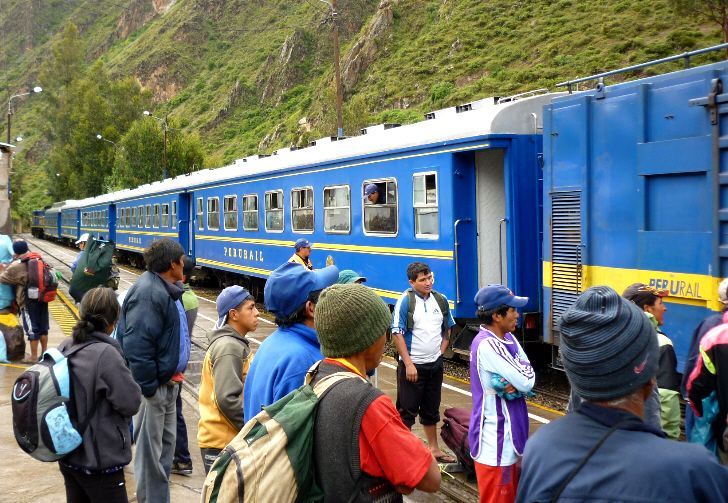
We start our journey at Ollantaytambo, where the 3-foot gauge line starts the run down the Urubamba river valley. It's narrow gauge because there is so little space between the raging river and the steep sides of the gorge - not even enough room for a road. There is no road to Machu Picchu. Everything that you see at Machu Picchu and Aguas Calientes arrived there by train. The only other way down the valley is to walk, and that takes 4 days.
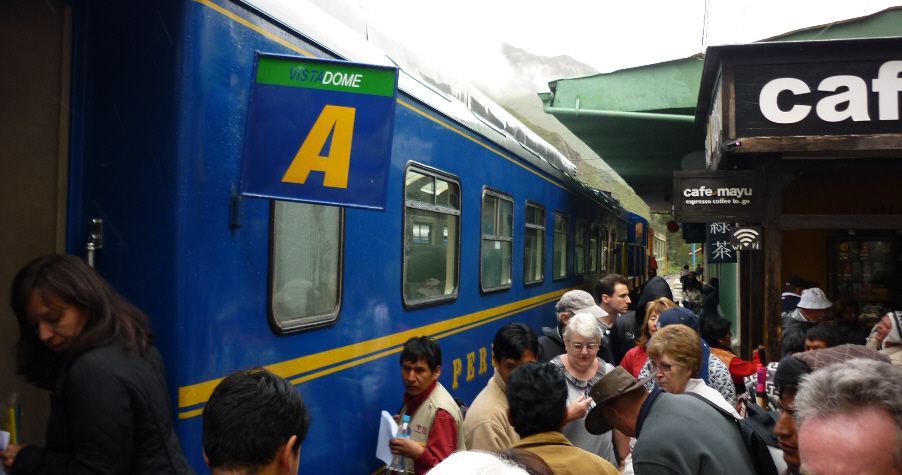
A mix of locals and tourists boarding the train at Ollantaytambo. The poshest train is the Hiram Bingham (named after the American who is credited with rediscovering Machu Picchu in 1911) but we weren't on that. However we did have vistadome coaches, and everyone needed a reserved seat.
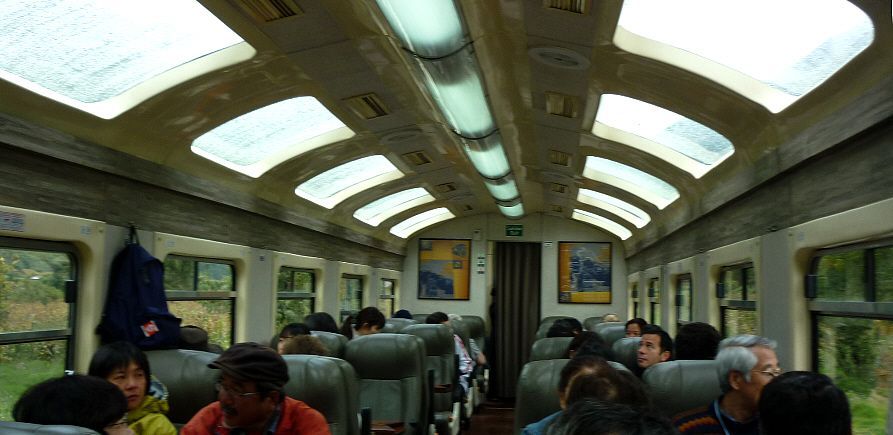
The vistadome concept in this case means windows in the roof, but that loses some appeal if it's raining on the outside, and misting up on the inside. When it does work, you can see the steep sides of the gorge that the train takes on its journey down the Sacred Valley, but the ample side windows provide a much better view of the raging River Urumbamba, which runs perilously close to the train tracks.
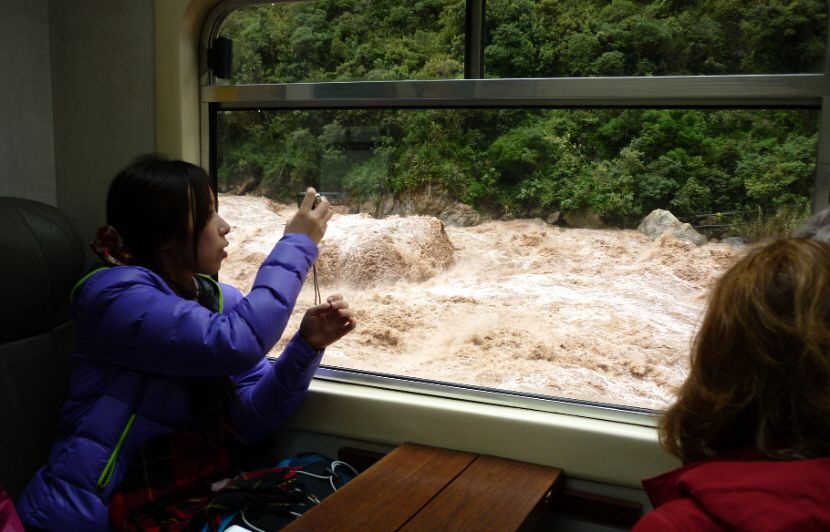
Many of the tourists seemed to be from China and Japan, where photography is almost replacing eyesight, but balancing a full-sized train on a muddy narrow gauge trackbed within a few feet of the mighty Urubamba is an experience that is worth recording.
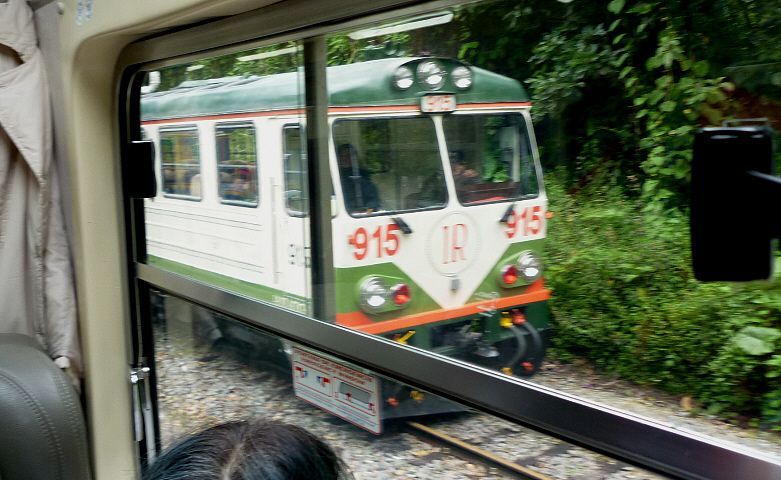
Most of the line is single track, but there are a couple of passing loops. At this one, we crossed with Inca Rail no. 915. This is a JZ Class 802 diesel built in the 1960s for the old 76cm gauge system in the former Yugoslavia. Three units were exported to Peru when the network closed in the late 1970s. They were refurbished to VIP standard for the Machu Picchu service, fitted with new Volvo engines, and today run sometimes singly and sometimes as multiple units.
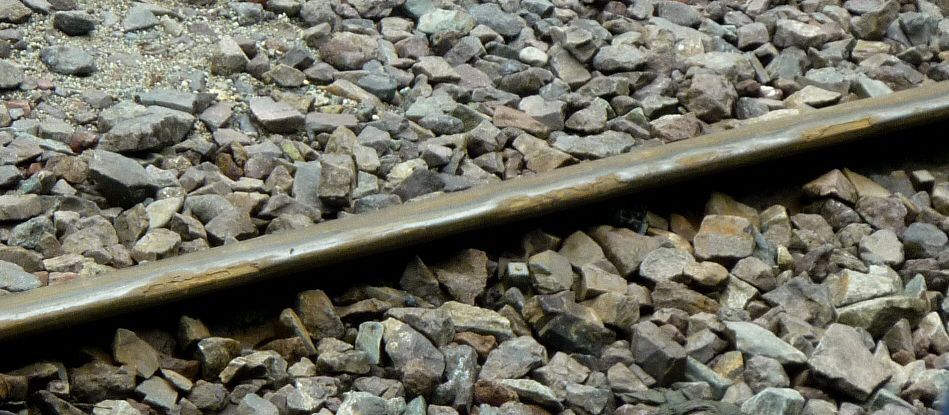
The state of the track is not brilliant. Take a close look at the rail photographed here on the passing loop. A lot of weight is put on this 3 foot gauge line, and the trackbed is not as stable as one might like, and periodically it gets washed into the river.

A Perurail train hauled by U. S. built Alco locomotive no. 356 finally approaches the end of the line at Aguas Calientes. Note the yellow digger on the left. They are positioned at intervals all along the line, tasked to rebuild the line as quick as possible if it should be overcome by the river.
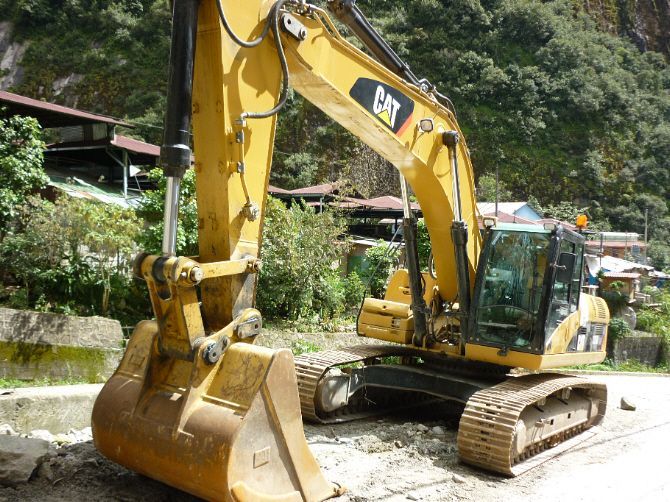
Here's another one. Remember that the only way this (and everything else) can get to this location is on the narrow gauge railway.
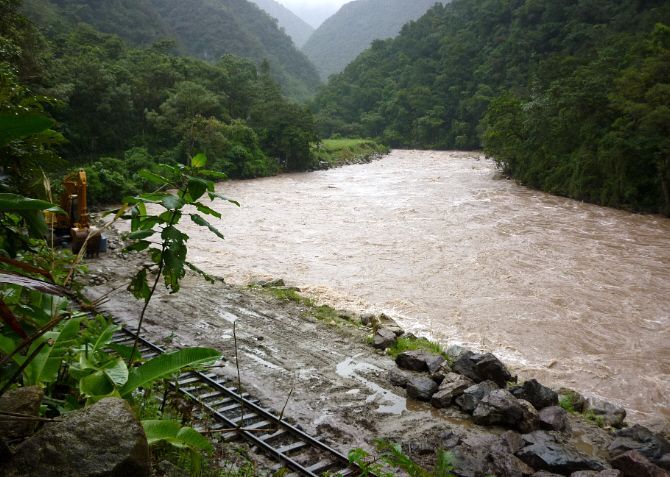
It's clear that the line is at risk when the river rises. That flat area of grass visible to the left of the river in the centre background is the patch upon which helicopters landed to rescue stranded tourists in 2010 when the track was washed away for several months further up the line. Apparently the facilities at Aguas Callientes were able to care for them temporarily, but then the beer ran out.
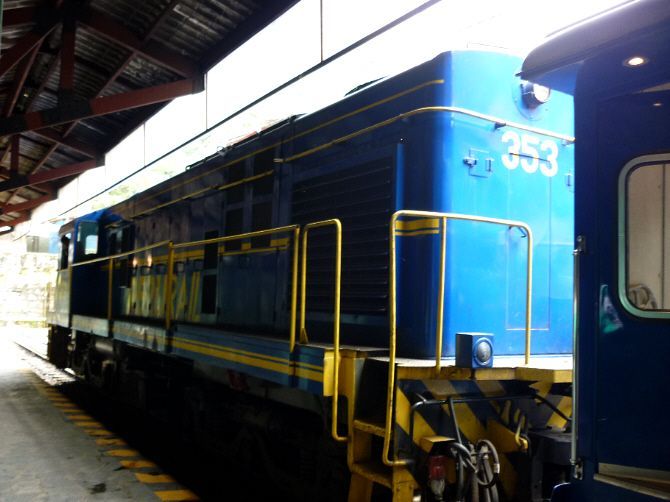
No. 353 waiting at Aguas Callientes is an ALCO DL535.

ALCO DL535 no. 481 hauls a tourist train out of Aguas Callientes to commence its run up the valley towards Ollantaytambo....
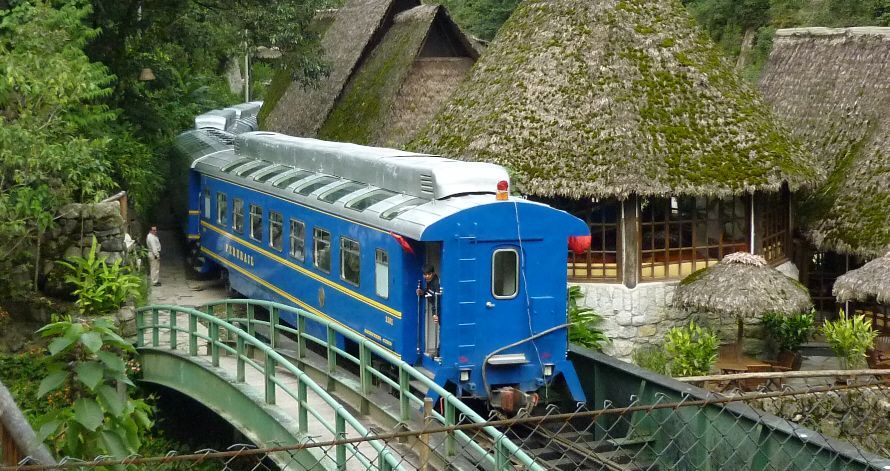
...and, as the train pulls out of the station, it immediately winds through the grounds of the Inkaterra Machu Picchu Hotel.
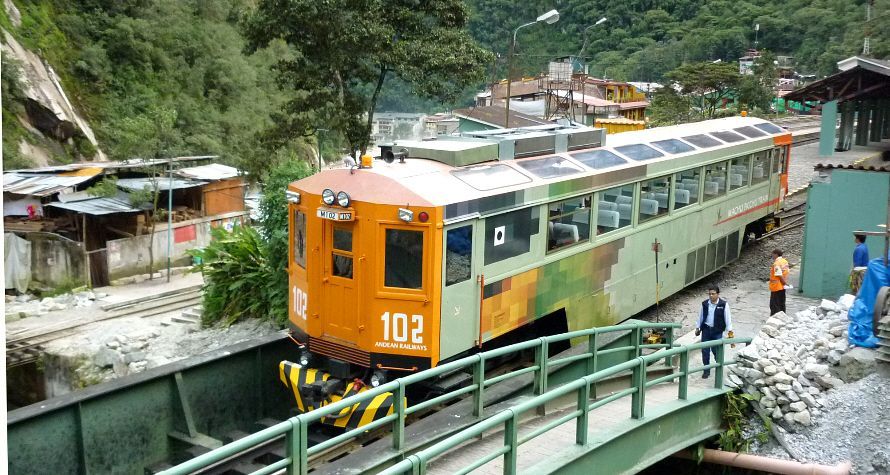
Andean Railways Corp railcar no. 102 shunting from one platform to another at Aguas Callientes. This new company started operating on the line in 2010, initially using two Edwards RailCar company Model 20 railcars built in 2009. This one seats 56, and is a very high-tech piece of kit. More details can be found here.
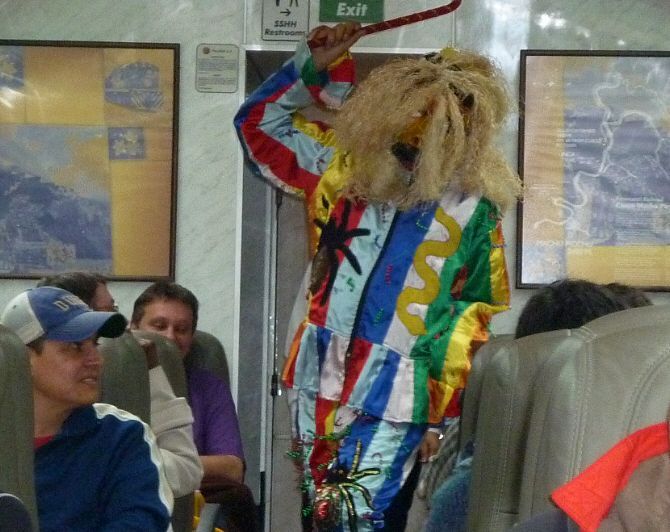
As we travelled back towards Ollantaytambo, the passengers were somewhat startled by the arrival of a colourful and apparently mad dancer, demonstating local traditions.
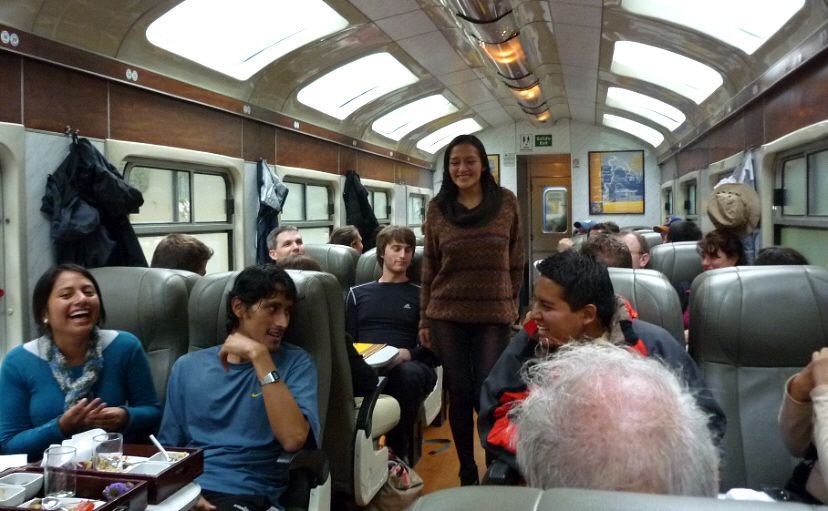
This was followed by a fashion show, in which two train staff members donned various items of clothing made from alpaca wool. They sold some too!

Back in Cuzco, this machine was fleetingly spotted in a childrens' playground. It seems that it is narrow-gauge Henchel 2-8-2 tender loco no. 123.
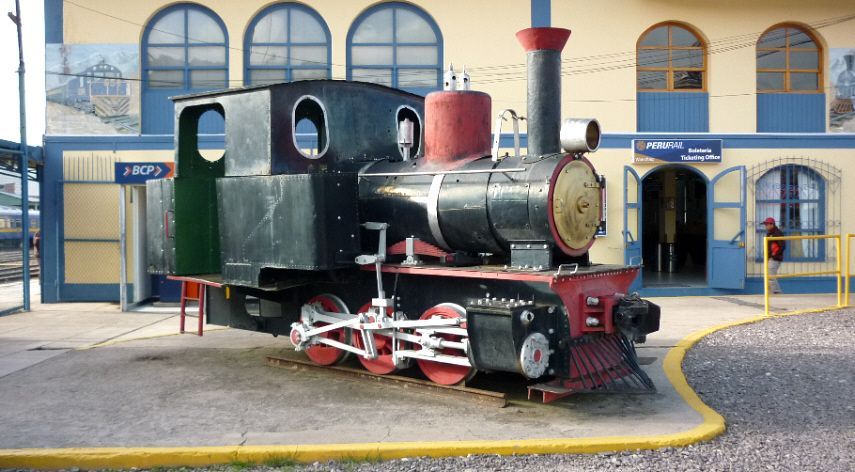
Another narrow gauge steam relic is this 0-6-0T, curiously displayed outside Cuzco's standard gauge station. We were there to catch the standard gauge Andean Explorer luxury train from Cuzco (10,000 feet high) to Puno (13,000 feet high on the edge of Lake Titicaca). Having looked forward to this trip, we were disappointed to discover that a landslide had closed the line, and all trains were cancelled. We flew instead.
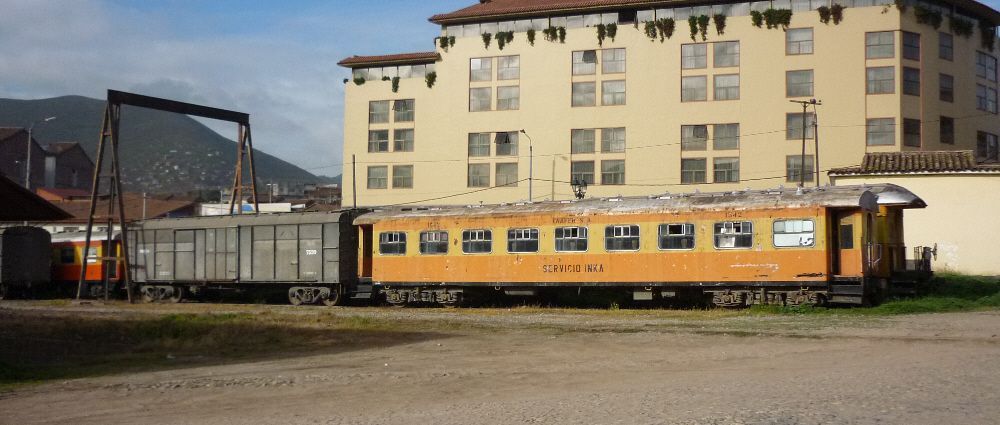
On the way out of the station heading for the airport I snapped these old bits of standard gauge rolling stock. The coach in the foreground, numbered 1542, is labelled ENAFER S.A., which is a company set up to manage the railways in Peru, so I suspect that in later life it was used for maintenance or administrative purposes.
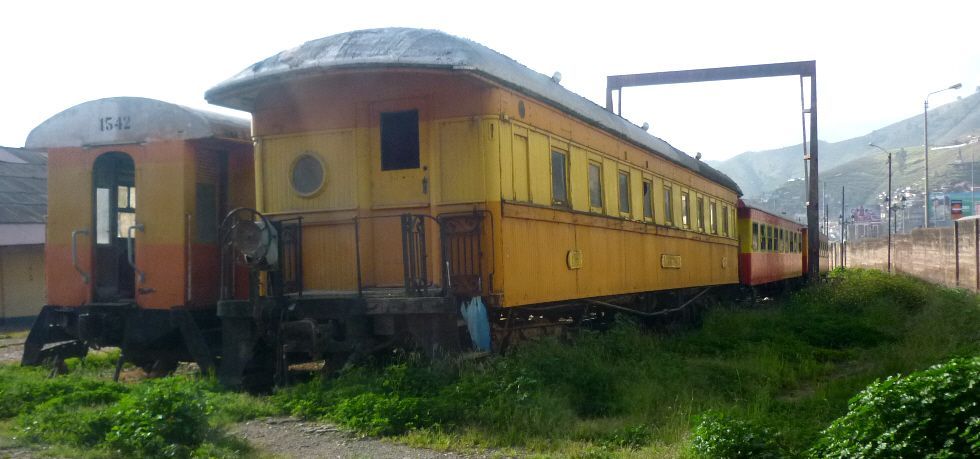
This standard gauge carriage appears to be even older than the other one, and I suspect that it is the 1925 sleeper car apparently owned by Tranvia Cuzco, who also operate the tourist tram in the city.
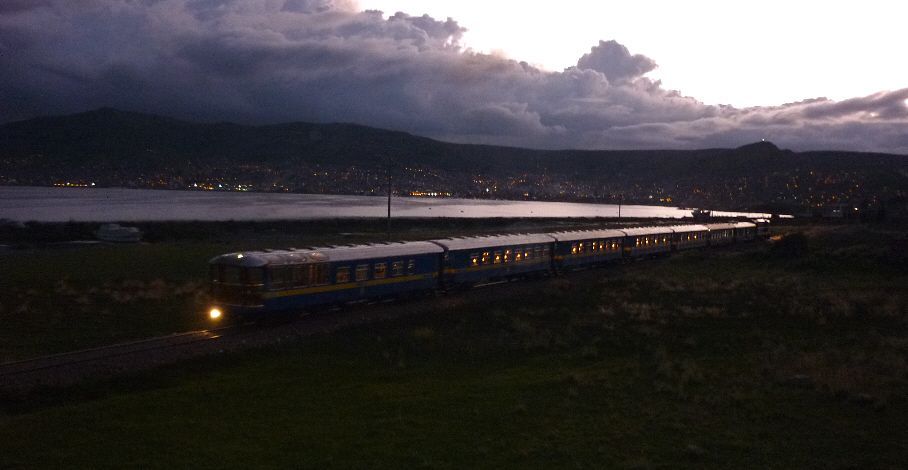
It was somewhat frustrating in our second evening in Puno to see the Andean Explorer hauled by an ALCO MLW DL560 (probably number no.633) chugging past our hotel on the edge of Lake Titicaca.The landslide had obviously been cleared. I guess that's life, and we did get a refund !
Email Events diary Past events list Classified adverts Classic U.K. Buses Classic Irish Buses Classic Manx Buses